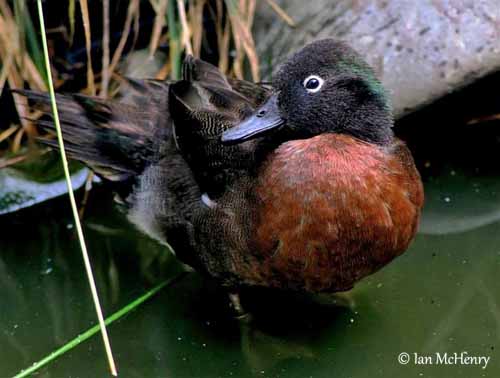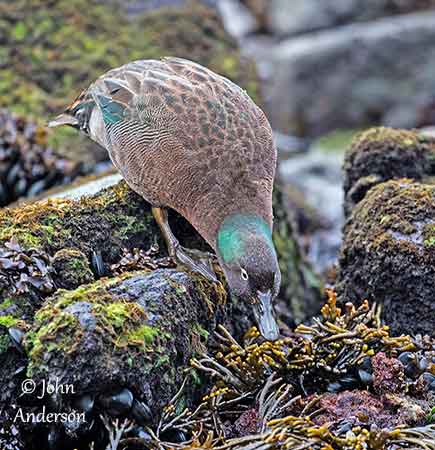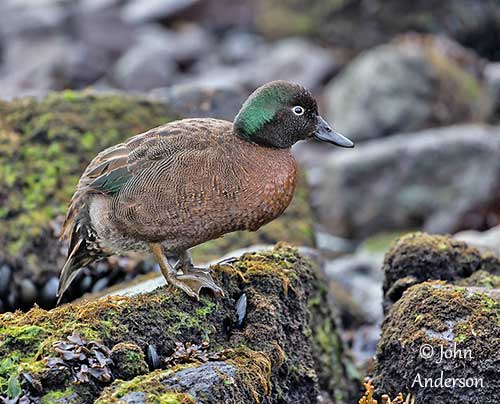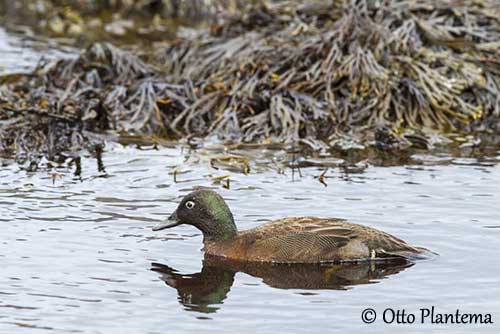
Fr: Sarcelle de Campbell
All: Aucklandente
Esp: Cerceta de Campbell
Ita: Anatra della Nuova Zelanda
Nd: Campbelltaling
Sd: Campbellkricka
Photographers:
John Anderson
John Anderson Photo Galleries
Ian McHenry
My New Zealand Birds
Otto Plantema
Trips around the world
Text by Nicole Bouglouan
Sources:
HANDBOOK OF THE BIRDS OF THE WORLD vol 1 by Josep del Hoyo-Andrew Elliot-Jordi Sargatal - Lynx Edicions - ISBN: 8487334105
GUIDE DES CANARDS, DES OIES ET DES CYGNES – de Steve Madge - Delachaux et Niestlé - ISBN: 2603013769
BirdLife International (BirdLife International)
Wikipedia, the free encyclopaedia
Campbell Teal or Campbell Island Teal
Anas nesiotis
Anseriformes Order – Anatidae Family
INTRODUCTION:
The Campbell Teal is endemic to Campbell Islands, New Zealand. Like the Auckland Teal, it does not fly. It disappeared from Campbell Island, killed by the introduced predators and especially the rats. Thanks to captive breeding programs, the small population is increasing slowly by reintroduction of these teals to their native islands.
DESCRIPTION OF THE BIRD:
Biometrics:
Length: 43 cm
Weight: M: 400g – F: 310g
The adult male in breeding plumage has sepia-brown plumage overall, with green iridescence on head, neck and back. The breast is tinged chestnut and the belly is paler brown. We can see a white flank patch, at tail base.
The female is uniformly dark brown with paler belly.
Both sexes have blue-grey bill. The brown eyes are surrounded by conspicuous white eyering. Legs and webbed feet are dark grey.
The juvenile resembles female.
These teals have short wings and do not fly.

BEHAVIOUR IN THE WILD:
The Campbell Teal feeds probably on aquatic invertebrates such as amphipods and insects, but it also takes plant matter. From some observations, it takes seeds from rushes and grass by stripping them with the bill from the stem.
It dabbles and probes in shallow water where for invertebrates.
It often adopts an erect stance with dropping tail.
It feeds and forages mainly at night along the tidal flats, and rests during the day, in order to avoid the predation by skuas, and especially during the nesting period.
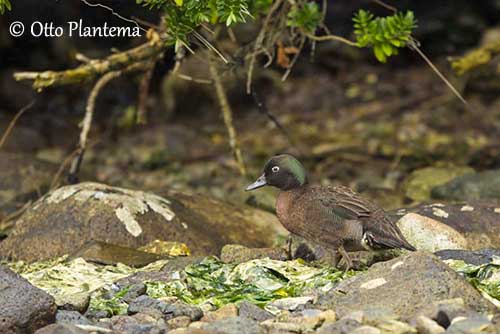
RANGE:
The Campbell Teal is found on Dent Island, Campbell Island group of New Zealand. It was formerly present on Campbell Island. A small population occurs on Codfish Island, NE Stewart Island.
HABITAT:
The Campbell Teal frequents the shorelines where it feeds among rocks and beached algae. It is also visible along muddy streams or pools in wetlands, with dense vegetation such as tussock grass, ferns and megaherbs.

